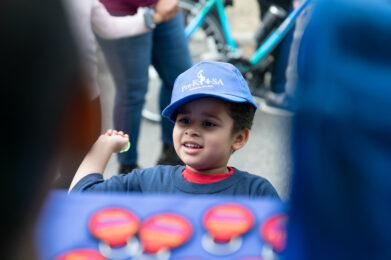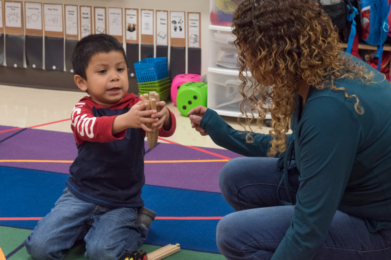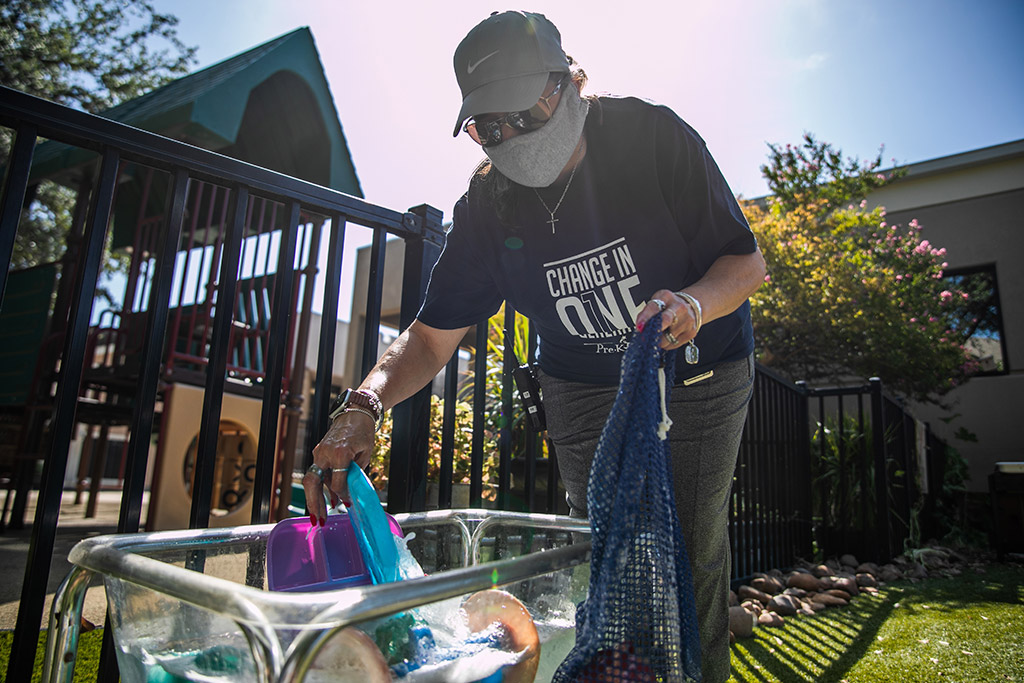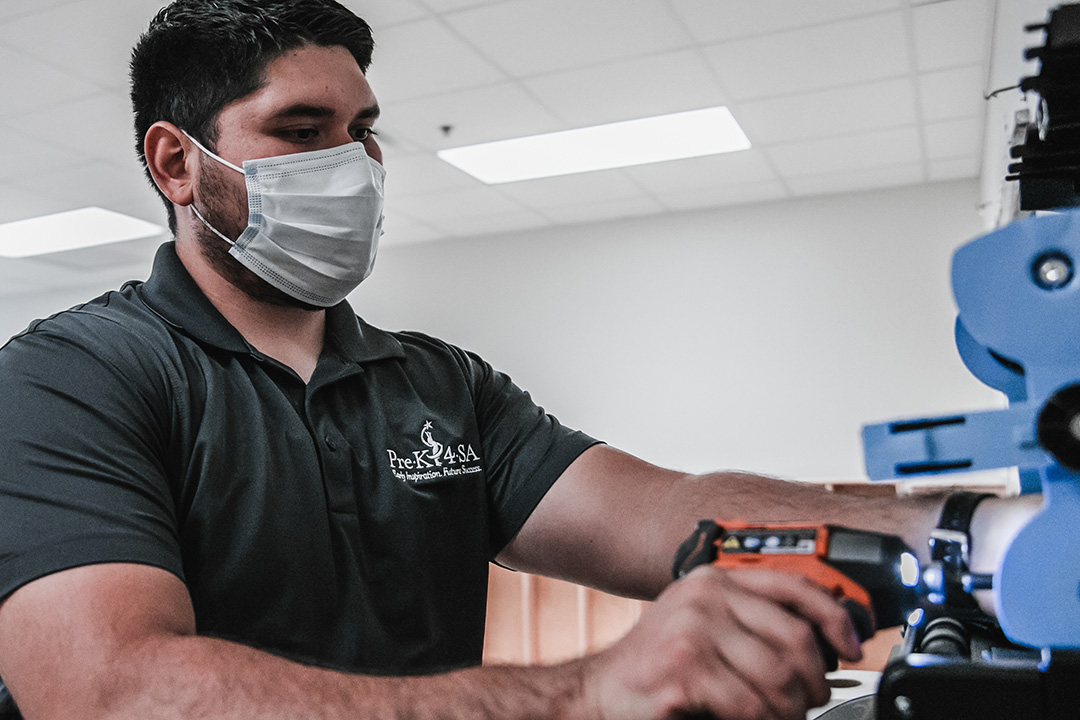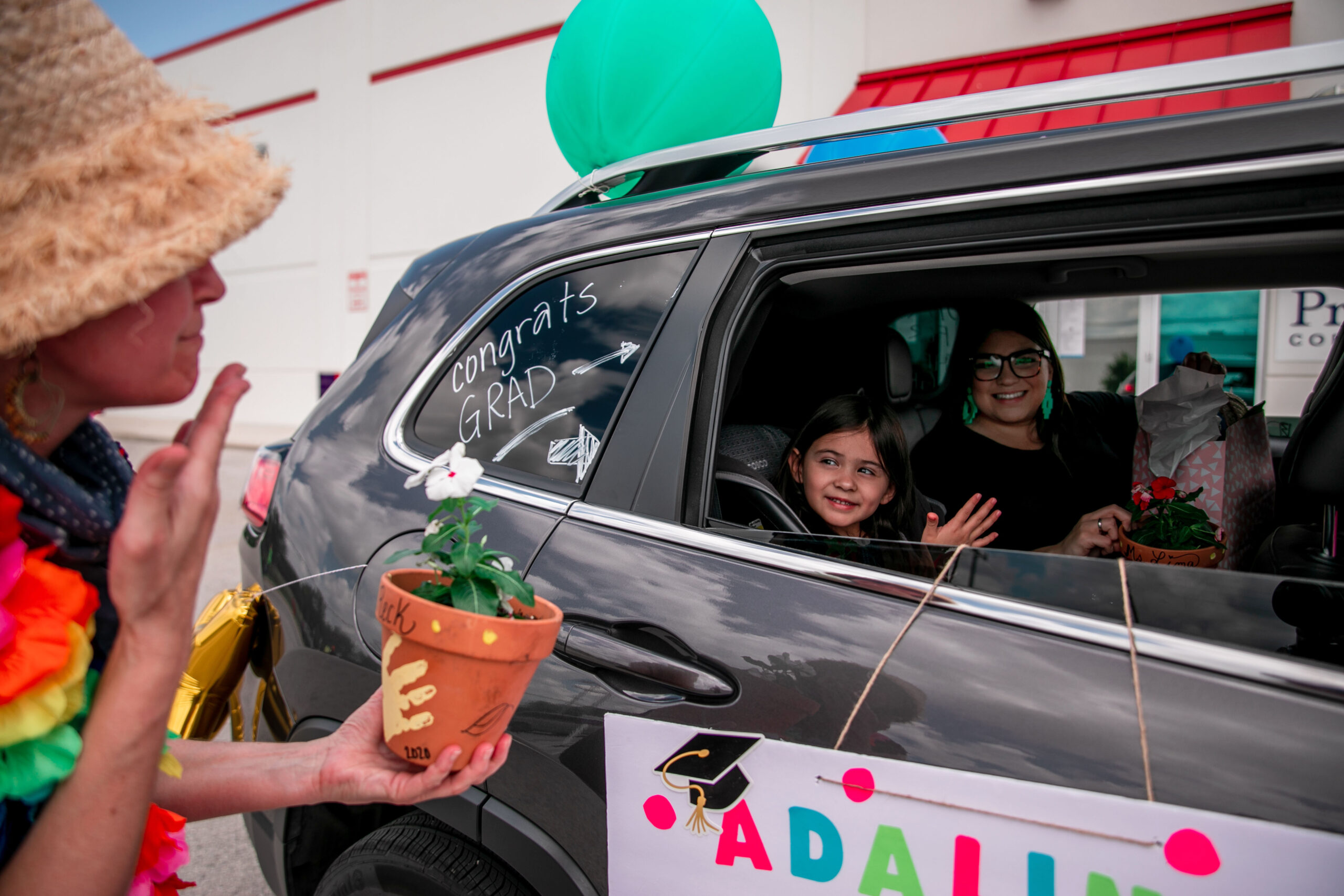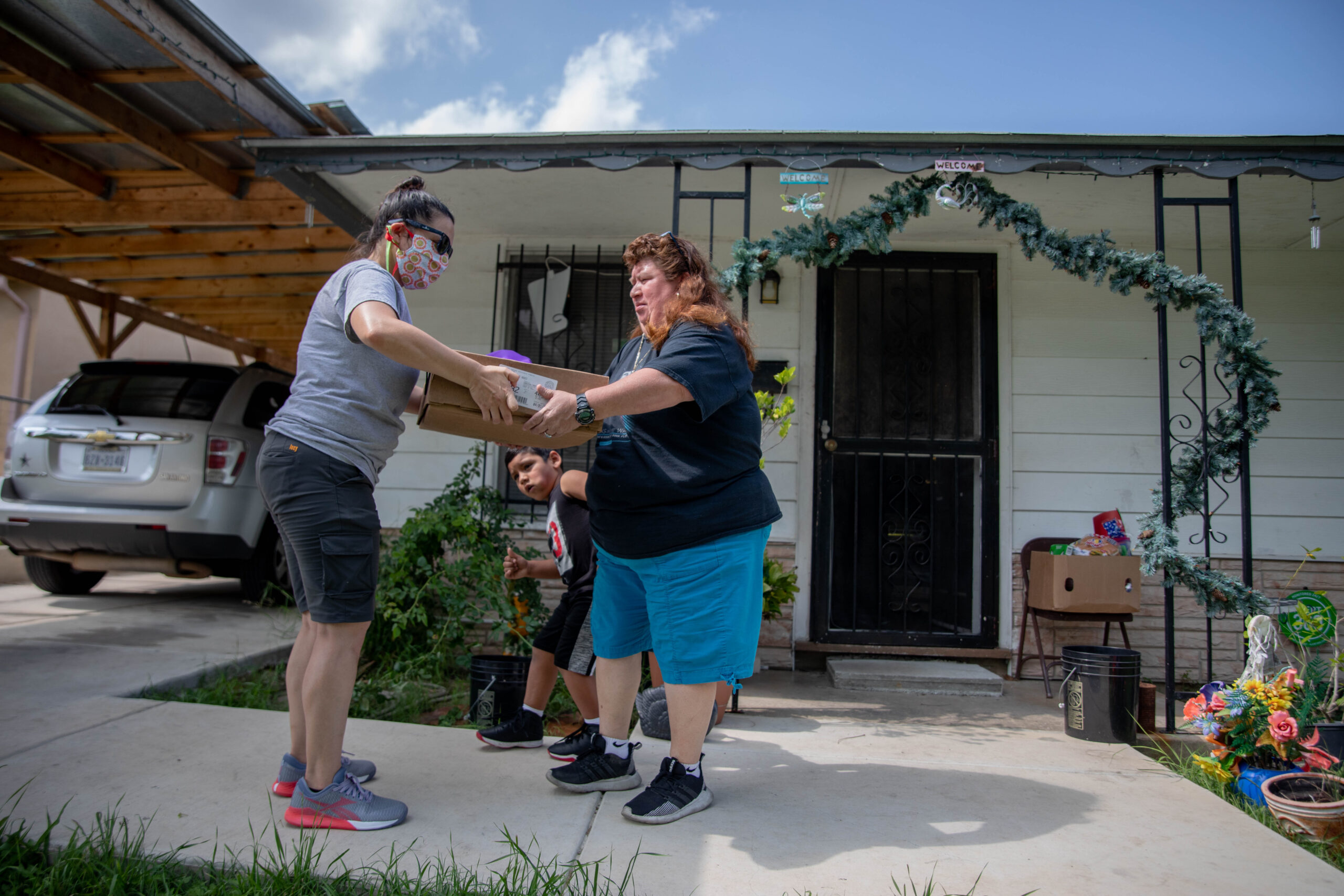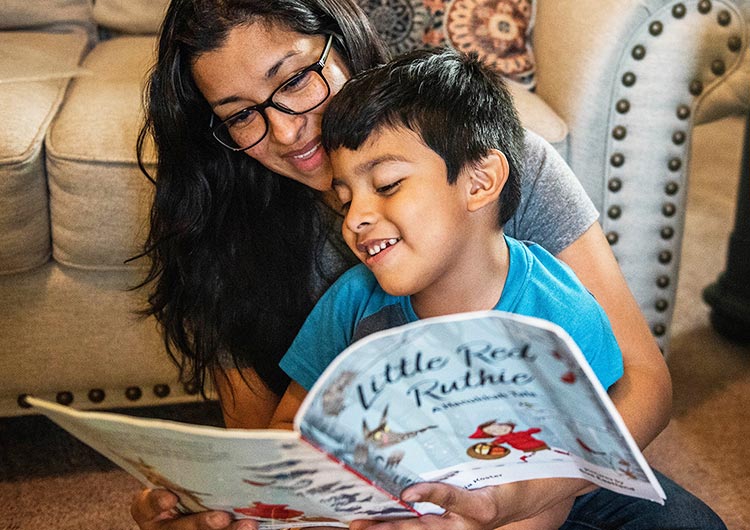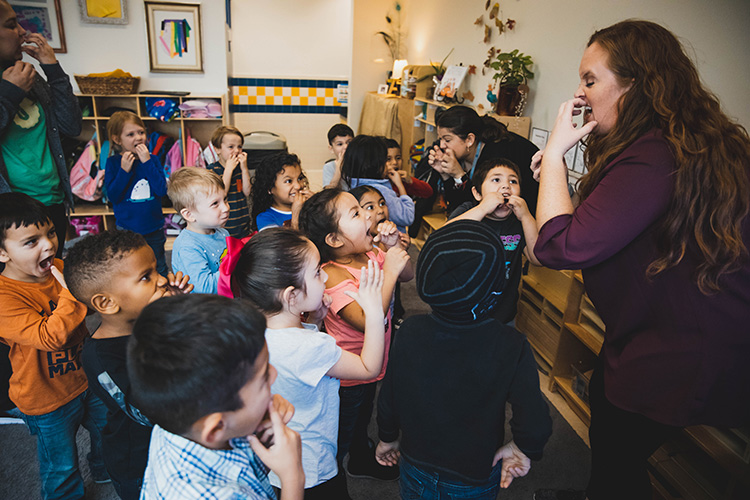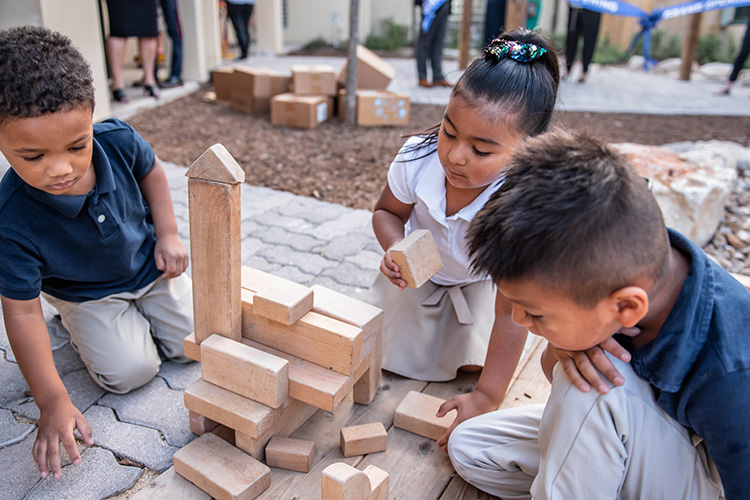I was thrilled to see more than 1,400 alumni families and children join us recently for our 2nd Annual Pre-K 4 SA Family Reunion!
Our Pre-K 4 SA staff worked their magic to make this event possible. Because of the pandemic, the team had to transform the event from a large in-person gathering to a drive-thru experience. Using strategy and imagination, the team turned Nelson Wolff Municipal Stadium parking lot into a celebratory fair-like parade full of activities, books and Pre-K 4 SA giveaways, and food for everyone in attendance. The children’s faces beamed as they interacted with their teachers and played games from the safety of their cars. After so many months of limited interaction, I know all of us were glad to enjoy a beautiful fall day in San Antonio.
Seeing the children’s gleaming smiles during the Family Reunion as they passed by reminded me of the very first time I visited a Pre-K 4 SA Education Center. As I drove up to the building, I wasn’t sure what to expect. From the outside, it looked like an ordinary early learning center. Everything changed when I stepped inside. From the moment I entered the building, I was completely blown away. I’ve had a long career in education, and seen schools across the world, but nothing like Pre-K 4 SA. It was classroom after classroom, filled with joyful children and teachers engaged in playful learning and families who are strongly committed to their children’s education. Then I learned that there was not just one Pre-K 4 SA Education Center but four, and that this bold initiative included professional learning and grants for other programs across the city. I couldn’t believe it. It was at that moment that I decided I just had to be part of this program. Every day since, I have been grateful that I am.
Pre-K 4 SA is proud to be leading San Antonio’s effort to develop a world-class workforce through high-quality early childhood education for all children in San Antonio. After the first eight years, Pre-K 4 SA had proven that a city can transform its early learning landscape through a comprehensive approach that includes:
- Education Centers
- Professional Learning
- Competitive Grants
- Family Engagement
Education Centers
Pre-K 4 SA’s four model education centers serve as demonstrations of what is possible when young children have access to highly skilled teachers and an evidenced-based curriculum, as demonstrated in the 2019 community impact study. San Antonio serves as a model in municipal early childhood programs and Pre-K 4 SA regularly hosts delegations from across the country and the world. In fact, Pre-K 4 SA has provided tours and facilitated detailed conversations with more than 25 municipalities, 3 international entities, and the US Department of the Army.
With research to demonstrate the success of Pre-K 4 SA’s approach, Pre-K 4 SA is supporting other programs to replicate our proven practices. We launched our first replication site in August 2019 at Gardendale Elementary School in Edgewood ISD. The Gardendale Early Learning Program powered by Pre-K 4 SA is creating greater capacity for high-quality early childhood education in San Antonio. Working side-by-side, Pre-K 4 SA and Edgewood are creating a model Pre-K through 2nd grade early learning program.
Professional Learning
Pre-K 4 SA believes that every child deserves high-quality early education. Pre-K 4 SA’s comprehensive approach includes educating 2,000 4-year-olds annually, providing over 10,000 hours of professional learning for educators, and developing parents as educational advocates. The Pre-K 4 SA Professional Learning division offers free, best-in-class training to any early learning educator in San Antonio serving children birth through third grade. Our comprehensive approach includes workshops, seminars, network events, and job-embedded coaching.
Pre-K 4 SA hosts in-service training for roughly 3,000 teachers, school principals and district administrators, early education leaders, and community providers annually. Through Pre-K 4 SA’s comprehensive Professional Learning Program, the number of highly skilled PK-3rd grade early childhood educators across San Antonio measurably increases each year.
Competitive Grants
Pre-K 4 SA provides over $4.2 million in grants annually to early learning programs across the city, benefitting all of San Antonio’s young children and their families. Pre-K 4 SA provides training and resources to early education teachers throughout our city, and supports and enhances other pre-kindergarten programs as well.
Pre-K 4 SA’s Grants program adds teachers, training and technology to San Antonio’s early childhood landscape annually. The funds create more access to high-quality curriculum for San Antonio’s 4-year-olds in public, parochial and child development centers.
Family Engagement
At Pre-K 4 SA, we believe stronger families make a stronger educational landscape. We believe that by supporting the entire family helps children build a successful learning foundation. Our Family Engagement Team collaborates closely with teachers, administrators, and staff to encourage educational potential in the home, engage families in school leadership, and build on each family’s unique strengths and abilities.
Most recently, Pre-K 4 SA coordinated a partnership with Vooks, the leading streaming service for children’s books, to provide a free, one-year subscription of Vooks to children and early learning teachers across Bexar County. Made possible by a contribution from Charles Butt, Pre-K 4 SA and its partners will tackle the challenge of limited book access for young children by putting the Vooks library of animated storybooks and specially designed learning guides in the hands of early learning educators and families with a 4- to 6-year-old child.
In Bexar County, where three in five children are economically disadvantaged and more than 30% are not reading on grade level by third grade, the need for early access to books is tremendous. Reading on level by third grade is a critical indicator of future academic success. Children who have access to books at home are much more likely to reach this important milestone. The Vooks platform brings books to life in a kid-safe environment. As part of this partnership, Pre-K 4 SA facilitated additional partnerships with the San Antonio Public Library Foundation (SAPLF) and BiblioTech, Bexar County’s all-digital public library, to extend the distribution of the subscription program and access to Wi-Fi to families across Bexar County. BiblioTech will allow families to check out personal hotspots for home access to Vooks.
Through Pre-K 4 SA’s first eight years since its inception, we have provided a high-quality education model that empowers our children at such a critical age for academic and even life success.
By 2021, Pre-K 4 SA will have impacted more than 452,161 four-year-olds within the San Antonio community. Pre-K 4 SA’s bold initiative is changing the landscape by developing a more productive workforce, healthier and more engaged families, less poverty, and civic-minded young adults to take San Antonio into the future. I feel very fortunate to be a part of this incredible work and together we can continue providing young children with a high-quality education for a brighter future.
For more information on how Pre-K 4 SA is changing the landscape, click the following link: https://prek4sa.com/program-overview/
Written by: Sarah Baray, Pre-K 4 SA CEO
